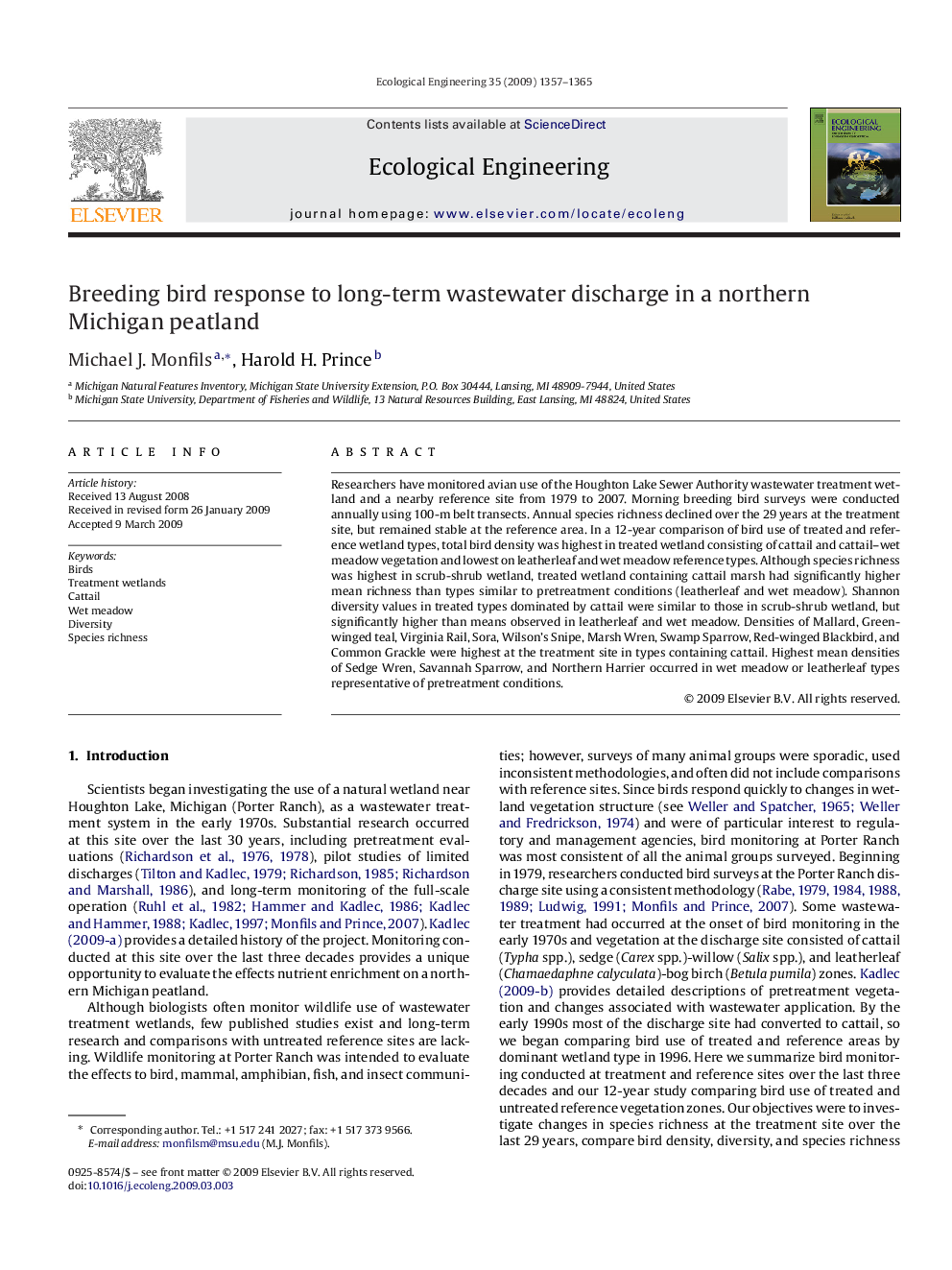| Article ID | Journal | Published Year | Pages | File Type |
|---|---|---|---|---|
| 4390621 | Ecological Engineering | 2009 | 9 Pages |
Researchers have monitored avian use of the Houghton Lake Sewer Authority wastewater treatment wetland and a nearby reference site from 1979 to 2007. Morning breeding bird surveys were conducted annually using 100-m belt transects. Annual species richness declined over the 29 years at the treatment site, but remained stable at the reference area. In a 12-year comparison of bird use of treated and reference wetland types, total bird density was highest in treated wetland consisting of cattail and cattail–wet meadow vegetation and lowest on leatherleaf and wet meadow reference types. Although species richness was highest in scrub-shrub wetland, treated wetland containing cattail marsh had significantly higher mean richness than types similar to pretreatment conditions (leatherleaf and wet meadow). Shannon diversity values in treated types dominated by cattail were similar to those in scrub-shrub wetland, but significantly higher than means observed in leatherleaf and wet meadow. Densities of Mallard, Green-winged teal, Virginia Rail, Sora, Wilson's Snipe, Marsh Wren, Swamp Sparrow, Red-winged Blackbird, and Common Grackle were highest at the treatment site in types containing cattail. Highest mean densities of Sedge Wren, Savannah Sparrow, and Northern Harrier occurred in wet meadow or leatherleaf types representative of pretreatment conditions.
